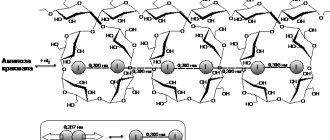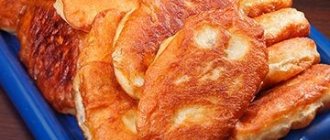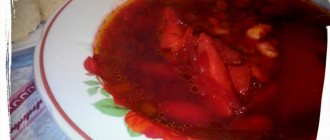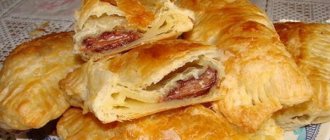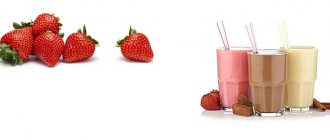Cottage cheese is ideal for medical and dietary purposes. But it’s important to remember one thing here. Cottage cheese is different from cottage cheese. The gastronomic variety in stores is such that you will be offered to buy a “good” country product with 18% fat content, fruit curd with a suspiciously long shelf life, and sweet, sweet curd mass. What to choose? When we want to lose weight, our eyes involuntarily begin to linger on those products whose packaging is labeled 0% fat. The calorie content of low-fat cottage cheese (0.6-1%) is only 88 kcal per 100 grams, which just fits perfectly into our plans.
How many calories are in 100 grams of low-fat cottage cheese?
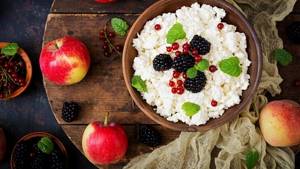
Cottage cheese is made from cow's milk. Can such a product be fat-free? Let's immediately define that this category of fermented milk delicacy includes products whose fat concentration is less than 3%. So what is the nutritional value of such cottage cheese? Approximately, a 100-gram serving contains 90 kilocalories.
But with a fat concentration of no more than 1%, the calorie content will be lower - no more than 79 kilocalories per 100 g of product.
On a note! In the production of so-called low-fat cottage cheese, the fat content is removed as much as possible from pasteurized milk. But it is not possible to completely eliminate it, so the indication of zero fat content on the packaging is just an advertising gimmick.
Cottage cheese with a minimal percentage of fat content and low nutritional value is in demand not only among those losing weight. It is enjoyed by athletes, as well as people suffering from certain ailments of the digestive tract. Low calorie content allows you to add other ingredients to the fermented milk product that will improve its taste, for example, honey.
How many calories are in low-fat cottage cheese with honey? So, we have determined that the nutritional value of a hundred-gram serving of cottage cheese can vary from 79 to 90 kilocalories. As for the beekeeping product, one spoon weighing 15 g will contain about 50 kilocalories. By adding, we get the final nutritional value, which reaches 140 kilocalories.
Often cottage cheese is mixed with another fermented milk product - sour cream. Fans of this treat will probably be interested to know how many calories are in low-fat cottage cheese with sour cream. We have decided on the nutritional value of granular cottage cheese. Manufacturers, as a rule, indicate the energy value of the product, including sour cream. Therefore, you can determine its calorie content depending on the fat content.
The nutritional value of sour cream can vary from 115 to 248 kilocalories. Accordingly, the fat mass of the product ranges from 15 to 25%. There is no low-calorie sour cream. But if you choose low-fat cottage cheese, then you can safely add a couple of spoons of sour cream to the serving, because compared to a hundred-gram serving, their calorie content will not be so huge.
Cottage cheese is considered a balanced product and a source of protein of animal origin. Even a low-fat treat contains about 11% protein. But the amount of fats and carbohydrates will be approximately the same. But depending on the fat percentage, the amount of fat may be a little more.
A good choice in pursuit of health or a pointless waste of money
Low-fat cottage cheese is a fermented milk product prepared by fermenting milk with a fat content below 3%, followed by removal of whey.
It is important to know that it is impossible to prepare milk with a fat content of 0, so manufacturers who write this figure on packs are deliberately deceiving customers.
The energy composition and amount of macro- and microelements in this fermented milk product of different fat contents are practically the same.
Vitamins that low-fat cottage cheese is rich in:
| No. | Vitamin name | Content per 100 grams of product |
| 1. | RR | 4 mg |
| 2. | WITH | 0.5 mg |
| 3. | IN 1 | 0.04 mg |
| 4. | AT 2 | 0.25 mg |
| 5. | AT 5 | 0.2 mg |
| 6. | AT 6 | 0.2 mg |
| 7. | AT 9 | 40 mcg |
| 8. | AT 12 | 1.3 mcg |
| 9. | N | 7.6 mcg |
| 10. | D | 0.02 µg |
Minerals that low-fat cottage cheese is rich in:
| No. | Mineral substance | Content per 100 grams of product, mg |
| 1. | Sulfur | 220 |
| 2. | Phosphorus | 189 |
| 3. | Calcium | 120 |
| 4. | Potassium | 117 |
| 5. | Chlorine | 115 |
| 6. | Copper | 60 |
| 7. | Sodium | 44 |
| 8. | Magnesium | 24 |
| 9. | Zinc | 0,364 |
| 10. | Iron | 0,3 |
| 11. | Manganese | 0,008 |
The product also contains small amounts of minerals, measured in micrograms per 100 grams of product:
| No. | Mineral substance | Content per 100 grams, mcg |
| 1. | Fluorine | 32 |
| 2. | Selenium | 30 |
| 3. | Molybdenum | 7,7 |
The amount of minerals and vitamins depends on the quality of the milk from which the fermented milk product is made.
Nutritional value of low-fat cottage cheese:
| No. | Substance | Content per 100 grams of product, g |
| 1. | Water | 71,7 |
| 2. | Mono- and disaccharides | 3,3 |
| 3. | Ash | 1,2 |
| 4. | Organic acids | 1,2 |
| 5. | Cholesterol | 0,002 |
Find out how to choose low-fat cottage cheese in the store from the video.
Nutritional value of cottage cheese
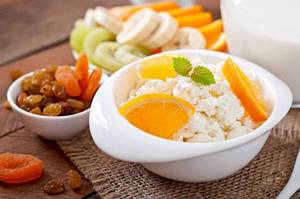
For many, mention of cottage cheese immediately evokes associations with calcium. Indeed, this fermented milk product is a source of calcium, which is why doctors strongly advise including it in your daily diet. But granular cottage cheese is not enriched with calcium alone.
Component composition:
- phosphorus;
- vitamin D;
- retinol;
- ascorbic acid;
- potassium;
- ferrum;
- magnesium;
- niacin equivalent;
- sodium;
- vitamins from group B;
- tocopherol
Cottage cheese with a minimal percentage of fat content contains the most vitamins from group B and calcium. But retinol, tocopherol and vitamin D, which is necessary for the full absorption of calcium, are contained in minimal quantities. This is due to the production technology of such treats. As already mentioned, the fat content is removed as much as possible from pasteurized milk, and with it most of the listed micro- and macroelements.
Cottage cheese with a higher percentage of fat content contains all these components in larger quantities, and you can even satisfy the body’s daily need for them by eating a serving of fermented milk delicacy.
Is cottage cheese a healthy product?
Now we should take a closer look at the energy value of our hero of the day - cottage cheese. It would also be interesting to consider how useful and valuable homemade cottage cheese and low-fat cottage cheese are for us.
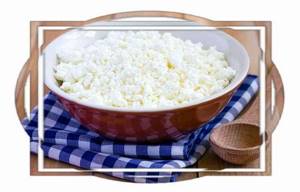
Methionine
Cottage cheese contains such an interesting substance as methionine (an amino acid). It is thanks to this that cottage cheese has a positive effect on the entire body and organism, and it especially has a positive effect on cholesterol in the blood. And it is this element of the cottage cheese that helps prevent liver obesity.
But at the same time, we should not forget that cottage cheese remains a fairly fatty product because it contains quite a lot of animal fat. So if you are someone who is prone to weight gain, you should consider switching to low-fat cottage cheese.
Benefit
Cottage cheese is useful primarily for such microelements as potassium, phosphorus, iron and calcium, of which there is quite a lot in cottage cheese. After eating just one pack of this product, you will replenish your calcium requirement for the whole day, which is an irreplaceable and valuable building material for the entire skeletal system, and in particular for bones, teeth and nails. In addition, one eaten portion of the same size cottage cheese will satisfy one third of the daily phosphorus intake.
How to make at home
There is nothing particularly difficult in preparing a homemade product yourself; such cottage cheese is no worse than store-bought. You just need to skim it: take good quality milk and put it in the refrigerator for 3-4 hours, the thick light cream will rise to the top and can be removed.
There are several more ways to curdle milk:
- Using calcium chloride. Special ampoules are sold at the pharmacy. The milk needs to be heated and calcium added to it; curdling will happen instantly. To remove excess sugar, you need to throw the mass onto a sieve or cheesecloth and let the whey drain, but you can eat this kind of cottage cheese without folding it.
- Option for freezing sour milk. The expired drink is placed in the freezer, allowed to freeze completely, and then the resulting ice is thrown onto cheesecloth. In this case, the cottage cheese turns out to be more creamy in consistency, whey-like and reminiscent of cottage cheese.
- Natural fermentation. Milk in a clean container is simply placed in a warm place, waiting until it sours and a curd begins to form. Then, it is heated and, in turn, is also tilted to remove the liquid.
- You can use not only milk as a base, but also fermented milk products such as kefir or fermented baked milk. They need to be heated in a water bath and separation into cottage cheese and whey will occur. It is important not to overdo it: as soon as flakes form, the heating stops and the mass remains to cool in the same container. Then you can discard the curd, but when it cools completely, the curd lump turns out to be quite dense, it is easy to remove it from the whey without any extra effort.
Low-fat cottage cheese is delicious to eat without heat treatment, arrange fasting days on it and use it as a basis for a diet.
For children and adults with intolerance to cow's milk, goat's milk is recommended, from which cottage cheese can be prepared in similar ways. Do not forget that it is impossible to make anything fermented from drinks with a long shelf life.
Make homemade cottage cheese yourself!
As an excellent alternative to some kind of cottage cheese, you can easily prepare cottage cheese yourself at home. This is done quite simply - boil the milk in an enamel bowl, and then cool it. We use sour cream as a starter. In this case, it is necessary to maintain the correct proportions of products.
Every time we buy this or that cottage cheese from different brands and different fat contents, we don’t always imagine how many calories we eat along with this cottage cheese. It’s good if each package has its energy value. However, what if the cottage cheese does not have such packaging (say, you bought the cottage cheese at the market)? What to do then?
Especially for this case, we have selected some data for you that may be quite useful to you. All these data are directly related to the calorie content of cottage cheese.
Technological nuances
In industrial conditions, cottage cheese is made by introducing starter into milk and then separating the whey. Sometimes calcium chloride is used for fermentation.
Natural cottage cheese should not include anything other than lactic acid bacteria and milk itself.
How to choose cottage cheese
- To choose a good product, you need to read the ingredients and look for the expiration date (no more than 3 days). Curd product, curd mass, “curd cheese” are not pure cottage cheese. As a rule, the technology allows for the presence of vegetable fats in their composition.
- The consistency of real low-fat cottage cheese is not plastic, but loose, dry, and fine-grained.
- Manufacturers sometimes add starch to the composition to give it a marketable appearance. There are various ways to test cottage cheese for this element. For example, you can drop a little iodine into the product, the starch turns blue.
Pay attention to the cost. The price of high-quality cottage cheese cannot be less than that of milk, we must not forget about this.
Nutritional properties
Is there a difference between types of cottage cheese? Undoubtedly.
So, this tasty white mass is classified according to its fat content. And then it’s a matter of everyone’s taste. It all depends on physiology, upbringing and worldview. For example, our village great-great-grandmothers were convinced that the fattier the cottage cheese, the better it is. And they can be understood. They worked in the fields from dawn to dusk, and simply had to eat in accordance with their lifestyle. I also advise you to read about another interesting milk product, just a slightly different milk, about kumiss.

But modern fighters for grace, however, do not always agree with their uneducated ancestors. Therefore, they prefer to eat low-fat dietary soft and tender cottage cheese or a low-fat three (or less) percent product.
To create a complete picture, I’ll explain that half-fat cottage cheese contains 9% fat, while truly fatty cottage cheese contains as much as 18 (in some cases, even more) percent.
Low-fat cottage cheese is made from appropriate milk, that is, low fat content, and as a result of fermented milk fermentation, the result is exactly what is intended.
Review of curd products
The abundance of brands in stores poses a difficult task for the buyer to make the right choice.
To make it easier, it is worth turning to various ratings conducted by research
At the top of many reviews is the “Savushkin” brand with low-fat cottage cheese “Savushkin Khutorok 1%”. It is recognized as natural, healthy and made according to all the rules without unnecessary additives.
This company also has soft cottage cheese “Tender 0%”. In its production, the rennet enzymes pepsin and chymosin are used, but there is no need to be afraid of this, they do not cause harm to the body.
They are from Prostokvashino
Products under the Prostokvashino brand, presented in almost any store, have three variants of low-fat cottage cheese in their line - 2%, 0.2% and soft cottage cheese 0.1%. All of them are natural in composition and do not include additives; they differ in taste and consistency. Soft cottage cheese is made using calcium chloride, so it contains slightly more than normal.
Reviews about the products of this brand are mostly positive, but there are also comments. Among items of similar fat content, reviews speak negatively about the taste of 2% cottage cheese, and in soft cottage cheese a reduced content of lactic acid organisms was found, 9 times less than it should be.
Who lives in the "House"
House in the Village cottage cheese products also have options. Low-fat cottage cheese is produced hard, with a fat content of 0.2%, and soft - 0.1%.
Reviews about the second option are more positive, although buyers note an unusual runny consistency.
The KBZHU of this product is also different; the hard one has significantly more protein - 18 g, and the soft one has 10 g.
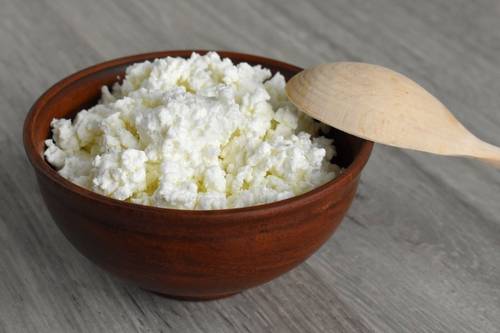
Other brands
Cottage cheese "Vkusnoteevo", which also has its fans and regular customers, does not fit into the specified framework in terms of the amount of yeast. Based on the results of the studies, manufacturers were recommended to correct this deficiency.
Good reviews and adequate composition are present in the products “Green Village”, “Kubansky Milkman”, “Molkom”. But these options in convenient packages are not available in all regions. Due to its short shelf life, it is more profitable to sell cottage cheese closer to the place of production.
